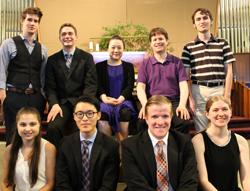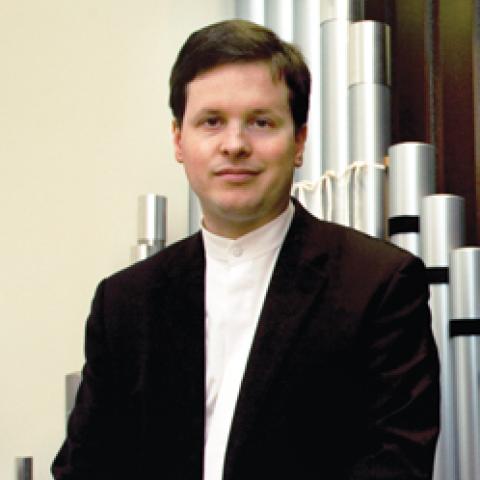
The Oregon Bach Festival Organ Institute presented a recital July 2 featuring eight participants showcasing their week’s work in class. The performers, selected through competitive auditions, took part in masterclasses and seminars led by Paul Jacobs. The recital featured music of Bach, Langlais, Vierne, Messiaen, as well as transcriptions of works by Wagner and Dvorák on the three-manual Hochhalter organ of the First United Methodist Church of Eugene.
Two participants of the class, Ryan Kennedy and Gregory Zelek, performed on a festival program the following week featuring the choral music of Bach and Frank Martin. Shown in the photo are, back row: Gregory Zelek, David von Behren, Dalaie Choi, Paul Jacobs, Ryan Kennedy; front row: Madeleine Varda, Mitchell Won, Grant Wareham, Caroline Craig.



